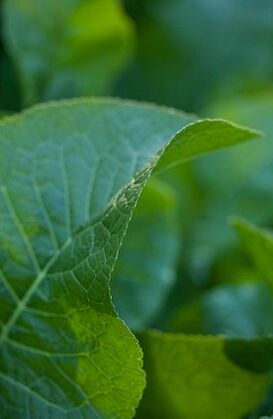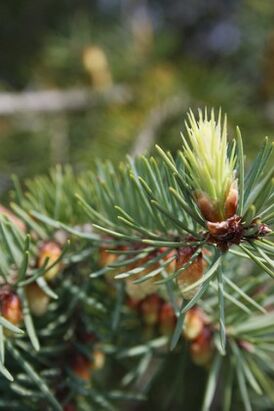
Much of humanity suffers from cervical osteochondrosis - a return due to a sedentary lifestyle and inadequate strain on the back.
Cervical osteochondrosis is a degenerative-dystrophic lesion of the intervertebral disc of the cervical spine. Such a lesion gradually spreads to all elements of the disc, and over time, the degenerative-dystrophic lesion reaches adjacent vertebrae, intervertebral joints, and ligaments.
Almost half of adults worldwide suffer from cervical osteochondrosis. In everyday life, neck and joint pain is often referred to as "salt deposition, " but this is a fundamentally incorrect definition. That’s what people said, and of course people literally understand that term. But in fact, salt does not accumulate in the joints (except for a disease like gout - uric acid salts accumulate in the joints with it).
Treatment of cervical spine osteochondrosis does not follow "absorption of salts, deposits", etc. Purpose. This misconception exists not only among patients but also among certain physicians who prescribe certain strict diets and frequent check-ups. In osteochondrosis, there is "no salt deposition" but reactive ossification, and of course no action can lead to "absorption of deposits".
Extent and stage of development of the disease
Cervical spine osteochondrosis is a chronic disease with periods of exacerbation and remission. Such periods have different durations. Rapid treatment of the disease is possible if it is the first stage of the disease and is noticed at an early stage.
The extent of the development of the disease
| Force | Patient's well-being, symptoms | Manifestations |
|---|---|---|
| I'm a graduate | Mild pain in the cervical spine, which may be exacerbated by turning the head | Light muscle tension in the neck |
| Grade II | Pain of greater intensity with return to the shoulder or arm, which is exacerbated by the head turn and bending. In terms of well-being, work capacity, weakness and headaches decrease. |
Decreased intervertebral disc height and nerve root entrapment |
| Grade III | Constant pain in the cervical spine, returning to the shoulder or arm. Feeling of numbness or weakness in the muscles of the arm. Weakness and dizziness in the patient's state of health | Restriction of mobility, pain when pressing the joints of the neck. Formation and formation of herniated intervertebral discs |
| Grade IV | Severe dizziness and tinnitus, impaired coordination due to compression of the vertebral artery feeding the cerebellum and occipital lobe of the brain | The intervertebral disc was completely destroyed and replaced by connective tissue |
Stages of cervical osteochondrosis
| X-ray stage | Section description |
|---|---|
| First phase | The cervical curve is balanced, with minor changes in the structure of the vertebrae |
| Second stage | Instability is expressed between the vertebrae, displacement of one vertebra relative to the other may occur, slight decrease in the height of the intervertebral disc |
| Third stage | The height of the intervertebral disc is ¼ lower than that of the other disc, which is higher. The intervertebral joints change. Appearance of bone growths. The intervertebral foramen and spinal canal narrowed. |
| Fourth section | The height of the intervertebral disc decreases greatly. The intervertebral joints change seriously. The bone growths became very large. The intervertebral foramen and spinal canal are significantly narrowed. |
Causes of osteochondrosis of the cervical spine

Cervical osteochondrosis occurs due to a number of factors. Here are the most important ones:
- Presence of scoliosis and improper posture.
- Overweight, obesity.
- Leading a sedentary lifestyle, physical inactivity, sedentary work, low physical activity.
- History of spinal injuries.
- Impaired metabolism.
- Large amount of physical activity.
- Nervous shocks, tension and stress.
- Heredity.
- Constant background load during various activities (for drivers, programmers, etc. ).
The effect of these factors increases the load on the cervical spine, as a result of which compensation of the overload by the neck muscles leads to convulsions and damage to blood circulation in this area. As a result, it leads to degenerative changes in the cervical spine.
These factors lead to changes in the intervertebral plates of the cervical spine, as a result of which their structure changes and their nutrition is disturbed. The changes also affect the small joints between the vertebrae, and the vertebral bodies are covered with bone growths.
The main symptoms of cervical osteochondrosis
- pain in the cervical spine. Pain may appear in the neck, back of the head, and in the shoulders or arms;
- feeling of weakness in the hands;
- decreased sensitivity in the hand;
- restriction of neck movement, cracking when turning and tilting the head with increased bone on the vertebral bodies, decreased height of the intervertebral disc, damage to small joints between the cervical vertebrae;
- dizziness, weakness, lack of coordination occurs when blood flow in the vertebral artery deteriorates, leading to deterioration of cerebral blood supply;
- numbness of the tongue, loss of vision and hearing occur in very severe cases when the blood supply to the brain is impaired.
Home treatment of osteochondrosis of the neck
Conservative therapy
Conservative therapy for cervical spine osteochondrosis involves treatment regimens, medications, blockages, orthopedic, physiotherapy, and spa methods.
The treatment should consist of the following components:
- ensuring rest and unloading of the spine;
- fight against pain syndrome;
- fight against muscle contracture and other reflex manifestations;
- combating reactive changes in nerve elements and other soft tissues surrounding the spine.

Some of these treatments can be done at home.
- At home, it is easy to follow the order to ensure complete rest and relief of the cervical spine. The patient should lie on a solid bed, have a small soft pillow under his head, and have a small bag with a small bag of warm sand or a recess in the neck.
- The traction used by doctors for conservative treatment cannot be done at home, but there is an alternative - a horizontal bar on which you should hang as many times a day as possible.
- Anesthetic blockade cannot be performed at home, but pain can be quickly relieved with other painkillers, other than steroidal anti-inflammatory drugs. These include effective quick-acting ointments as well as good anti-inflammatory agents for oral use. Thus, it is possible at home to rapidly relieve pain in the treatment of cervical osteochondrosis.
Attention! All medicines should only be taken in consultation with your doctor!
- Group B vitamins should be taken for home treatment. The vitamin does not have to be in the form of an injection or tablet.

It is found in the following foods (foods with the highest B vitamin content are shown):
- Berries and fruits - in pineapples, dates, dried apricots, raisins, blueberries;
- Vegetables and herbs - potatoes, spinach, asparagus, leeks, parsley, green peas, garlic, horseradish;
- Vitamin B is found in fairly high doses in all meat products, but beef and chicken by-products (kidney, liver, heart, tongue) are particularly useful;
- Seafood is also very high in vitamin B. Of the fish, these are tuna, pink salmon and mackerel. Particularly abundant in sturgeon caviar and polling eggs. Squid also contains a high percentage of vitamin B;
- High B vitamin content is found in the yolks of chicken eggs and quail eggs;
- Nuts and seeds also contain a lot of these vitamins - especially pine nuts and sunflower seeds, as well as pistachios, sesame seeds and peanuts.
- Massages and exercises can also be used at home. A massage therapist can come to your home to do a therapeutic massage, or your relative can learn the basic techniques of cervical spine massage.
Traditional methods of treating cervical osteochondrosis at home

Horseradish leaf compaction
Cervical osteochondrosis can be treated with horseradish leaves because they have an anti-inflammatory effect on the joints of the neck when the disease is treated at home.
The procedure is performed in the form of a compress.
- It is necessary to take young and fresh horseradish leaves and put them in boiling water for a few seconds.
- The leaves should then be applied to the cervical spine immediately.
- Cellophane should be placed on top and the compress should be covered with a warm scarf or handkerchief.
- The compress from the leaves should be kept as best as possible, it is advisable to apply at night.
Due to the healing properties of the leaf compactor, the neck starts to move better and the unpleasant disease does not affect the well-being so strongly. Two large fresh sheets are enough to cover the neck and upper back.
Alcohol compression
Alcohol compresses are also often used in the treatment of cervical osteochondrosis at home.
- You should take 300 ml of medical alcohol, 10 ml of iodine, 10 tablets of crushed painkillers (powder) and 10 ml of camphor alcohol.
- Mix all of this thoroughly and use as a compress on sore areas of the neck.
Potato and honey compaction
- Grate 1 large raw potato on a grater and add 2 tablespoons of honey to the mashed mass.
- The resulting drug is spread on a tissue and applied to the cervical spine for two hours.
Pine bud tincture

Pine buds are used as a folk remedy to treat the disease.
They should be harvested in early spring. The pine buds should not be larger than 2 cm and not less than 1, 5 cm.
- Collected pine buds should be rinsed thoroughly.
- Grind the kidneys in a meat grinder and add sugar in a 2: 1 ratio, meaning you have to take some sugar for two parts of the kidneys.
- Mix everything and keep refrigerated for two weeks.
- In two weeks the product is ready. One teaspoon should be taken three times a day for three weeks.
- You can store pine buds in the refrigerator for 1 year.
Herbal teas

With osteochondrosis of the cervical spine, it is recommended to drink various herbal teas to strengthen the body in general:
- chamomile;
- with cranberry and birch leaves;
- linden color;
- marigold and St. John's wort;
- with rosehips;
- with mother herb and horseradish.
Thus, concomitant use of folk remedies and medications prescribed by a physician can accelerate the alleviation of symptoms of cervical osteochondrosis, reduce the duration of exacerbation, and prolong the release period.






















